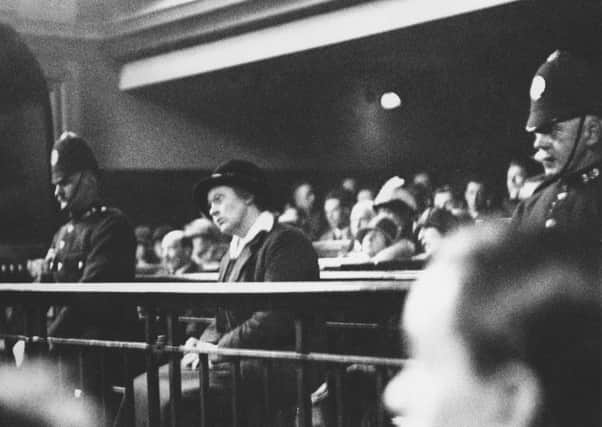Sign of the crimes: digital archive's historic verdict


Statistics dating from 1925 – which have been digitised for the first time – show how crime and the justice system have changed in Scotland over the years.
According to the statistics, which have been published by the Scottish Government, more than 115,000 people were prosecuted and 90,000 convicted of offences in Scotland in 1925.
Advertisement
Hide AdAdvertisement
Hide AdWhile the majority were fined by the courts, 4,775 were sent to prison, while a further 45 offenders were sentenced to penal servitude, a form of punishment through hard labour which was not outlawed in Scotland until 1950. One person was sentenced to death, while 265 youths received corporal punishment in the form of whipping.
It was the year inventor John Logie Baird successfully transmitted the world’s first television picture, while in the United States, F Scott Fitzgerald’s The Great Gatsby was published.
The population of Scotland was smaller in 1925 at around 4.8 million compared with 5.3 million today, but as a proportion the number of serious crimes committed was roughly the same. According to the statistics, there were 11 people processed by the courts for murder and a further 42 for culpable homicide.
In comparison, there were 57 homicides (murders and culpable homicides) in Scotland in 2015/16, although the figures are not directly comparable.
The number of homicides in 2015/16 was in fact the lowest number of recorded for a single 12-month period since 1976, the first year for which comparable data is available.
Another similarity between the figures from 90 years ago and the present day is the tendency of the courts of to hand out fines instead of sending an offender to prison.
A note in the original statistics states: “Although the number of fines imposed increased from 64,279 in 1924 to 66,883 in 1925, the percentage of persons fined to the total number tried has remained at the very high figure of 72 per cent.
“The present day tendency to avoid committing offenders to prison whenever possible is strikingly exemplified by the figures in respect of fines.”
Advertisement
Hide AdAdvertisement
Hide AdFigures are now available from selected years between 1925 and 1995.
By 1955, there were a total of 128,801 people prosecuted in Scotland, a figure which had grown steadily during the 1940s and early 1950s.
In comparison with 9,854 “offences connected with motor vehicles” in 1925, there were more than 40,000 three decades later.
In 1975, the total number of crimes “made known to the police” (not the number of persons prosecuted) was 232,482. This compares with 246,243 in the year to the end of March 2016.
A Scottish Government spokeswoman said: “These statistics are a historical snapshot, letting us look back at the way crime was perceived and dealt with in Scotland in generations past.
“It is important we don’t lose these documents and use them to reflect on how things have changed and how far we have come in our recent history.”